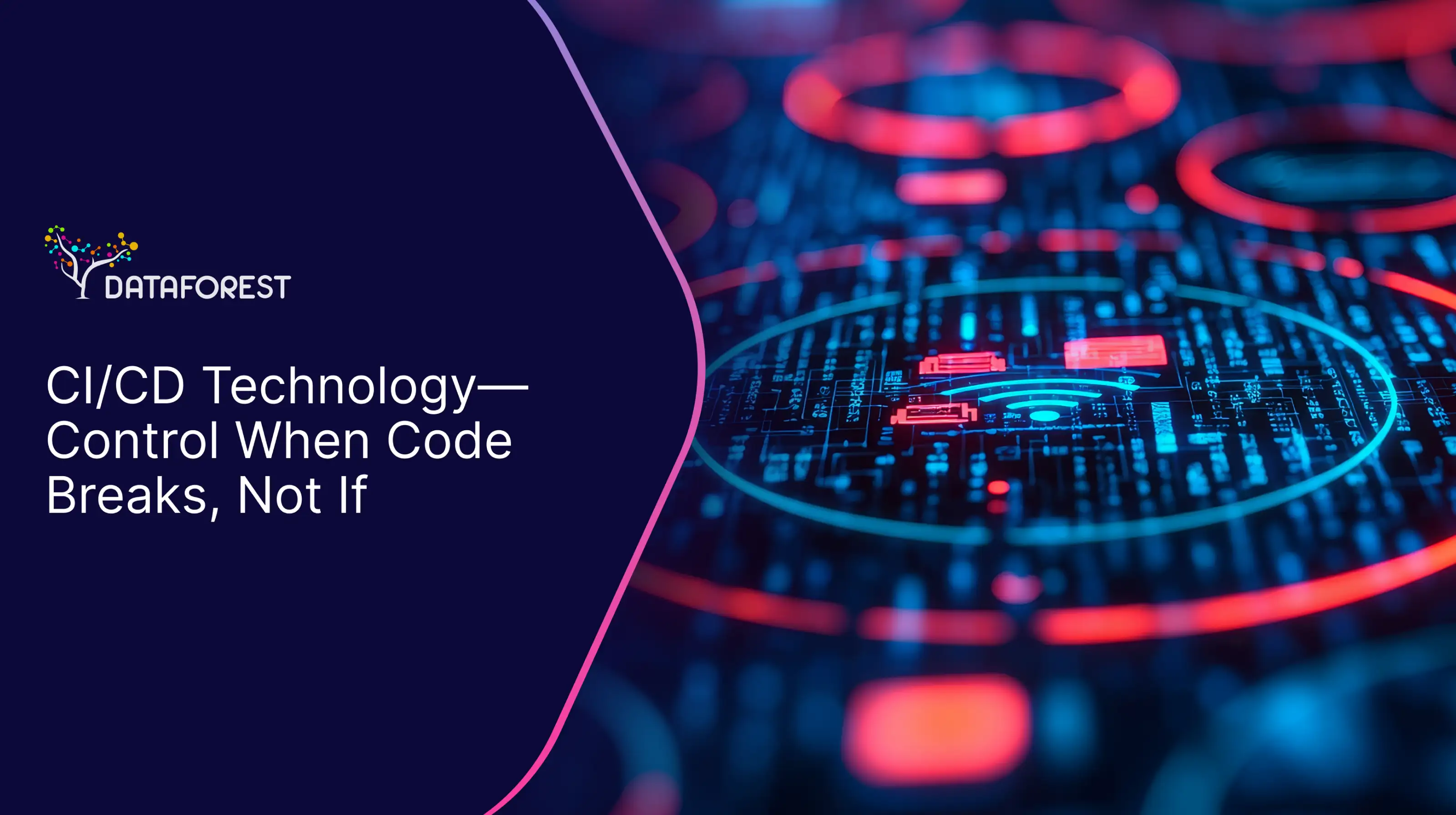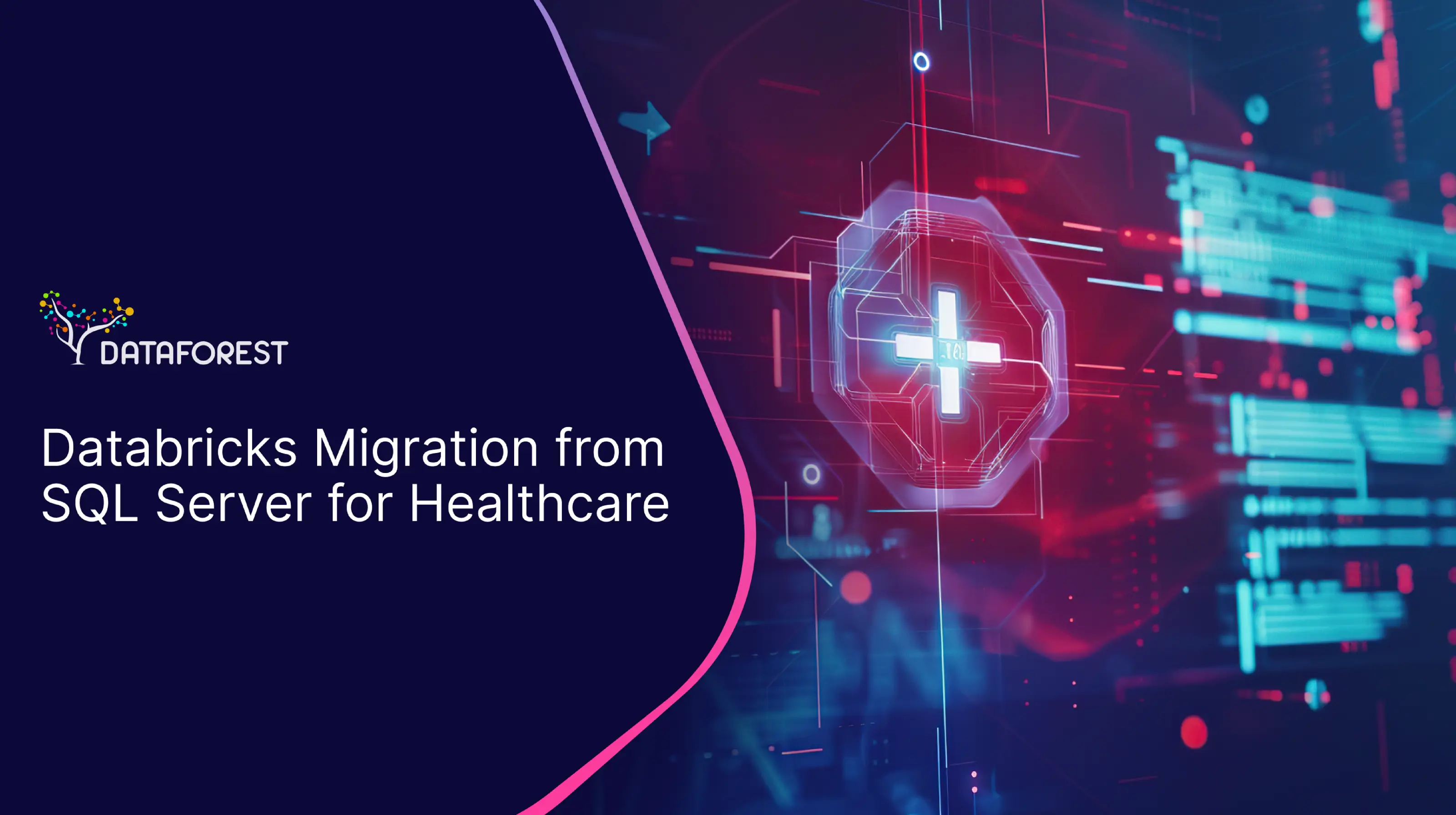Netflix deploys code changes 4,000 times per day because its CI/CD pipeline catches failures in minutes, not after millions of customers lose their Friday night movie. Before CI/CD, a single bad deployment could crash their entire platform for hours; now, a failed change is automatically rolled back in under 60 seconds. For the same purpose, you can book a call with us.
.webp)
CI/CD vs. Traditional Software Development
Traditional development is baking a big wedding cake: you spend weeks planning and making each layer, then try to stack them all at once on the big day. Sometimes the layers don't fit, the frosting looks wrong, and you're sweating bullets hoping it doesn't collapse during the ceremony. It's risky, and if something goes wrong, you've got a room full of hungry guests.
It's a rigid development lifecycle that often includes too many manual steps, struggles with legacy systems integration, and creates large amounts of technical debt management later.
The CI/CD workflow is designed to keep things moving fast, with frequent releases and automated testing: you're baking small batches all day long, trying new recipes, and getting instant feedback from customers. If one batch isn't perfect, no big deal – you learn and adjust immediately. Your kitchen never stops, but it's a smooth operation because you're dealing with manageable chunks and fixing problems while they're still small.
Here's what that means in software terms:
- Traditional: "We'll launch in 6 months!" (They did not launch in 6 months)
- CI/CD: "We just shipped three new features today" (And they'll probably ship more tomorrow)
The Real Deal with CI/CD
For devs, it's like finally being able to breathe: push your code and see it live without waiting forever – no more "it works on my machine" drama. Everything runs smoothly thanks to continuous integration, continuous deployment, and an automated test suite that validates user inputs during the build. The CI/CD pipeline refers to DevOps practices that enable developers to integrate changes into code repositories and deliver updates automatically, ensuring code quality assurance. The pipeline reduces the error rate by catching bugs before users report them. The consistent use of automated testing ensures that software quality remains high throughout the development process.
For the business, CI/CD boosts business agility and shortens time-to-market. What feature has the big client been begging for? It will be live by the end of the week. Is your competitor launching something cool? You're not stuck waiting for next quarter's release to respond. Instead of arguing about them in endless meetings, you actually experiment with features and kill the ones that aren't working.
Ops teams also benefit: fewer 3 AM deploys, faster release management, and reliable rollbacks. Teams use performance monitoring to stay ahead of production issues. Everyone gains from higher deployment frequency, better team collaboration, and reduced firefighting.
And the money side is pretty sweet, too – you're shipping value daily instead of burning cash on manual processes and fixing massive integration bugs. From a cost perspective, automation improves development cycle efficiency, minimizes wasteful manual steps, and increases software scalability.
CI/CD and Traditional Software Development: Pros and Cons
In a CI/CD workflow, the process is designed to keep things moving fast, with frequent releases and automated testing. This enables teams to ship features quickly and respond to changes in real-time. However, the downsides of this speed include the complex setup required to get CI/CD automation running smoothly, the potential for deployment fatigue (releasing too frequently can wear out the team), and the need for teams to become comfortable with more complex development tools and processes. Implementing CI/CD best practices requires a robust automated testing system to ensure consistent code quality. The CI/CD process depends heavily on integration CI practices, where developers frequently merge code changes into a shared repository, reducing conflicts and improving collaboration.
On the flip side, traditional software development is about control and predictability. The pros focus on taking time to plan and working in clear phases, which means fewer surprises. Teams are more deliberate with their releases, and it feels more stable because changes aren’t coming as frequently. But the big downside is that it can be slow—new features and bug fixes take longer to roll out. The approach also struggles when requirements change, and big releases can pack in a lot of risks since so much is being deployed at once.
Book a call, get advice from DATAFOREST, and move in the right direction.
The Hurdles of Getting CI/CD Up and Running
The Culture Shock
You walk into the office ready to revolutionize everything with CI/CD technology, and suddenly, you're in the middle of a corporate soap opera. A man from QA is panicking because he thinks automation will steal his job. The development team is split between the young guns who live and breathe CI/CD systems and the veterans who've been burning the midnight oil on Fridays for 15 years. Your manager keeps asking why deployments can't stay on weekends, "when it's safer." Every meeting turns into a debate between "move fast and break things" and "if it ain't broke, don't fix it." And don't even get started on the security team, which needs to approve every single tool in your CI/CD pipeline.
The Testing Nightmare
Your central CI/CD systems are supposed to streamline everything, but setting up automated tests feels like opening Pandora's box. That "simple" login test? It fails randomly because nobody thought about session timeouts. Integration software tests often take so long to run that developers frequently engage in a game of ping-pong between builds. You rely on CI/CD automation to catch bugs early and avoid manual testing, but half of your end-to-end tests break because someone changed the color of a button. The staging environment is nothing like production, so tests pass perfectly until they hit the real world. Your test coverage looks great until you realize it's mostly testing the happy path, while users somehow find ways to break everything with weird edge cases. And every time you fix one flaky test, two more pop up like some kind of testing hydra.
The Legacy Code Monster
You dive into the existing codebase, and it's like archeology mixed with horror movies. There's source code written in an ancient version of Java that nobody dares to update, but you can't ignore it because it controls key business functions. The main app has more hard-coded credentials than actual business logic. Configuration files are spread across twelve different locations, and nobody knows which ones are being used. The deployment process is documented in a 2015 Word file. Half of the steps are no longer functional, but production continues to run. You find database calls in the UI code, UI code in the database procedures, and one crucial Excel file that somehow controls everything through macros.
The Infrastructure Puzzle
Choosing the proper types of CI/CD software is like trying to solve an infrastructure puzzle. While Azure DevOps watches from the corner, Jenkins keeps fighting with GitHub Actions while leveraging cloud computing resources to run your CI/CD workflow efficiently across different environments. Balancing on-premises vs. cloud, Docker misconfigurations, poor infrastructure as code, missing secrets management, and long pipelines. Every environment needs different secrets, but nobody knows how to manage them properly. The staging server has half the production RAM but somehow needs to run the same workload. Your pipeline takes 2 hours to run because nobody thought about caching. And just when everything seems to be working, someone mentions that you need to support both Windows and Linux deployments.
The Budget Battle
Trying to get a budget feels like negotiating with a brick wall that only speaks in spreadsheets. Management loves the idea of CI/CD development until they see the price tag. You need new Git Enterprise licenses because the free version hit its limits. The cloud bills start climbing because each branch needs its own environment. The monitoring tools you picked suddenly need enterprise licenses because you hit the free tier limits in two days. Training everyone on the new tools costs more than the tools themselves. And every time you mention "refactoring" in a budget meeting, someone brings up that the current system "works fine."
Choosing the Right Approach: CI/CD or Traditional Development
It's not about which method is better overall, but which one will help your project succeed based on its specific requirements. Choosing between what is CI/CD in DevOps agile development or the traditional one is a decision that affects how fast you deliver, the quality of the software, and how your team works together. It’s balancing speed, control, and resources.
Consider The Nature and Scope of The Project
Begin by examining the project itself. Is it a fast-paced, constantly evolving application where features need to be rolled out quickly and adapted on the fly? Or is it a bigger, more complex project with set phases and clear deliverables where stability is key? If you're building something like a startup product or a mobile app where feedback needs to be implemented quickly, CI/CD's rapid iterations and automated testing might be perfect. If you're working on an extensive enterprise system that demands heavy documentation and strict approval processes, traditional development might offer the stability needed.
Evaluate The Skills and Resources Available
Consider your team's skill set and the tools available to you. What CI/CD in DevOps requires is knowledge of automation tools, version control systems, and continuous testing processes. If your engineering team is familiar with tools like Jenkins, Docker, or Kubernetes, or if you're ready to invest in learning these, CI/CD technology could be a good fit. But if the team isn’t well-versed in those tools or if there are limited resources for setting up automated types of CI/CD pipeline, traditional development might be easier to manage with the existing skill set.
Consider the level of collaboration and communication required.
CI/CD technology shines in environments with high collaboration and constant communication, often playing a crucial role in an organization's agile transformation. If your project involves multiple teams (like DevOps, QA, and developers) that need to work together closely and keep track of frequent changes, types of CI/CD pipeline help by automating much of the process and keeping everyone in sync. On the other hand, if the project is more segmented, with clear, separate phases (e.g., design, development, testing), the traditional approach with its structured handoffs might be a better fit.
Assess the impact of time-to-market on the project.
If you’re racing to get a new feature or product in front of users before your competition, CI/CD technology will help you do that by allowing for quick releases. It lets you get feedback faster and adjust based on user needs in real time. But if your project can afford a longer development cycle, and quality or security is the top priority, traditional development might give you the oversight to release a more polished product.
Where Is CI/CD Actually Heading—And Should You Care?
The future promises AI that writes deployment scripts and quantum computers that test code. Most of this sounds impressive until you remember that half your team still struggles with basic Git commands. Here's what might actually matter for business decisions in the next five years.
AI-Powered Pipeline Automation
Teams using AI-assisted types of CI/CD pipeline report cutting incident response time by nearly half, which translates to fewer weekend emergencies and actually getting to finish dinner with your family. The trouble starts when you realize these systems learn from your past mistakes—and then get really good at repeating them in novel ways. Training an AI on years of deployment failures means it absorbs every shortcut, every "temporary" workaround that became permanent, and every time someone pushed code on Friday afternoon, hoping nothing would break.
Low-Code CI/CD
The basic appeal is obvious: drag-and-drop interfaces let product managers push updates without waiting three days for a developer to write deployment scripts. Marketing teams can finally control their own content releases, instead of relying on IT to schedule changes around sprint planning meetings.
These visual tools work great until someone who doesn't understand databases accidentally deletes customer records while trying to update a landing page. The problem isn't that non-technical people are careless—it's that the tools hide complexity rather than managing it, so users make changes they can't fully grasp. Success depends on building brilliant guardrails that prevent catastrophic mistakes while keeping things simple enough for normal humans to use without a computer science degree.
Quantum CI/CD—Impressive Theory, Distant Reality
The theoretical appeal sounds incredible: quantum computers could test millions of code combinations simultaneously, rather than running sequential builds that take hours to complete. Complex financial algorithms and encryption systems can be validated in minutes, rather than requiring overnight test runs that delay releases. Quantum simulation could theoretically catch edge cases and system interactions that traditional testing completely misses.
Here's the reality check that matters for actual business decisions: quantum computers remain wildly expensive experimental machines that are only effective for specific mathematical problems, not general software testing.
.webp)
CI/CD Transforms Your Relationship with Technology Providers
In a traditional approach, you contact tech providers like DATAFOREST at specific milestones, during initial setup, or when major upgrades are planned, which can lead to longer resolution times and more complex support scenarios. With CI/CD, you're better equipped to maintain proactive communication with providers because you're continuously integrating and deploying their technologies, catching issues earlier, and often needing specific support. CI/CD allows you to quickly respond to users' needs by releasing updates and features based on real-time feedback. When using CI/CD, you're more likely to need API support, integration assistance, and guidance on automation best practices from your providers rather than troubleshooting help. Traditional approaches might require more project-based support during big releases, while CI/CD needs more frequent but focused interactions around specific features or integrations. Please complete the form, and let's decide which approach is more suitable for your business.
FAQ On CI/CD Workflow
Explain what CI/CD is in DevOps.
The CI/CD definition in DevOps refers to Continuous Integration and Continuous Delivery, a set of practices that enable developers to frequently integrate and deliver better code changes into a shared repository, and automatically deploy those updates to production through a CI/CD pipeline. This approach emphasizes automation and collaboration, allowing teams to release software faster, with better quality, and in a more efficient manner. Different types of CI/CD pipelines may be adopted depending on the project scale and requirements.
What are the advantages of using CI/CD over traditional software development?
CI/CD allows for faster delivery cycles, with automated testing and deployment ensuring that updates are rolled out continuously through the CI/CD pipeline. This reduces the risk of large, buggy releases by catching issues early in smaller chunks of code. It enables teams to respond quickly to feedback and market changes, supported by different types of CI/CD pipeline strategies.
What are the disadvantages of using CI/CD over traditional software development?
CI/CD requires a significant upfront investment in automation tools and infrastructure to establish a reliable CI/CD pipeline. It can also lead to deployment fatigue, as frequent updates may overwhelm teams or users. It demands more robust testing and monitoring systems, which can be challenging to implement effectively across different types of CI/CD pipelines.
How does CI/CD help in faster and more frequent releases?
CI/CD automates the entire testing and deployment process, allowing teams to integrate changes and release them continuously without manual intervention. The code is tested automatically at every stage, ensuring that issues are caught and the release CI/CD pipeline is not blocked. This means that new fixes can be shipped almost immediately once they're ready.
How does traditional software development ensure quality and reliability?
Traditional development follows a more structured development process, with dedicated planning, development, and testing phases, ensuring each stage is thoroughly reviewed. Releases are usually larger but occur less frequently, allowing for more time to test and ensure reliability. The slower pace allows for more detailed planning and quality control before changes are pushed live, unlike the streamlined CI/CD pipeline approach.
How can CI/CD help in reducing development costs?
By automating repetitive tasks like testing and deployment within the CI/CD pipeline, CI/CD frees up developers’ time, allowing them to focus on coding and building new features. It reduces the cost of manual labor needed for frequent testing and deployments and catches bugs early, preventing costly fixes later. Additionally, it reduces downtime, ensuring the business continues to operate smoothly.
Can CI/CD be implemented in all types of software development projects?
CI/CD is ideal for agile development, SaaS platforms, and systems built on a microservices architecture, where rapid updates and scalability are crucial. However, it may not always suit projects with strict regulatory requirements or complex infrastructure. It requires a development team with a good understanding of automation and continuous delivery practices, along with the ability to choose the right types of CI/CD pipeline. Traditional approaches might be more practical for legacy systems or small, one-time projects.
How does CI/CD impact team collaboration and communication?
CI/CD fosters team collaboration by bringing together devs, QA, and ops under shared DevOps practices. Continuous feedback loops in the software delivery pipeline encourage faster decision-making and reduce silos. With version control systems, feature branches, and infrastructure as code, teams maintain alignment across the entire development lifecycle.








.webp)















